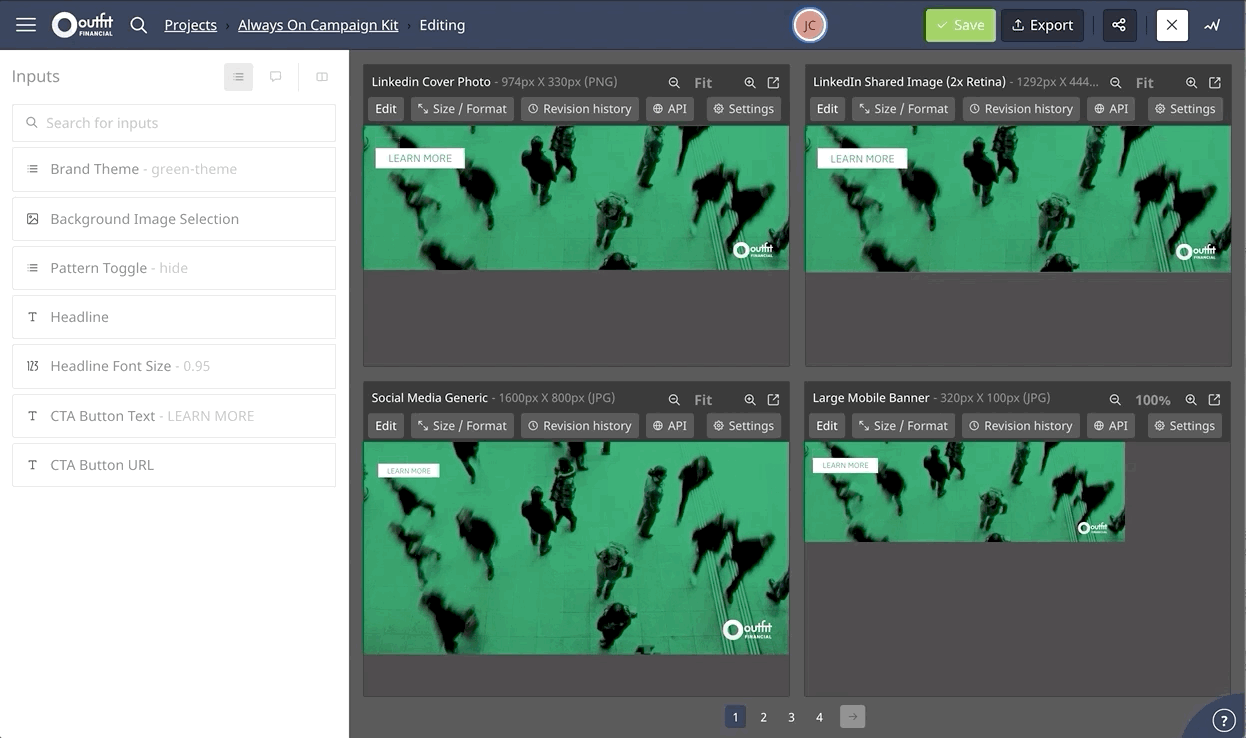In our recent webinar, Social Disruption and the New Need for Speed, we talked about how social distancing and the need to work remotely has driven a process of rapid digital adaptation. Businesses today are operating in circumstances that require brands to be able to connect their customers to the information and the products they need at speed.
It’s also clear that relevance and utility are crucial as brands struggle to keep up with rapidly shifting regulatory environments and economic factors, as well as consumer habits and expectations.
It’s not enough just to be quick to market. Once in-market, brands must be able to adapt their messaging to changing circumstances to stay relevant.
These changes are ringing in a new era of responsive marketing.
In marketing, the term ‘responsive’ has most often been used to describe websites that adapt automatically to the screen on which they’re being viewed without degrading the user experience.
But when we talk about responsive brands, we’re talking about brands that make use of technology to adapt their marketing to quickly communicate relevant messaging to customers - in whichever channel they’re seeking it.
So what are the key elements of a responsive brand? A marketing team that’s supported and empowered to react quickly to new information or to counteract challenges as they arise is the foundation on which responsive brands are built.
But real responsiveness goes even further than this. To be considered truly responsive, we believe the following elements are essential.
- The ability to respond within hours, rather than days or weeks
As we discussed last week, the COVID-19 pandemic means government regulations can, and frequently do, change literally overnight.
For brands that operate in multiple states in the US or Australia, or throughout the United Kingdom, and are contending with different national, state-based or local regulatory and health requirements affecting their business, this could mean changes in multiple divisions or territories in a very short space of time - each of which are likely to be tailored for local circumstances.
 Marketing materials may need to be developed and distributed to specific teams catering for their specific needs - not just once but repeatedly within a short timeframe.
Marketing materials may need to be developed and distributed to specific teams catering for their specific needs - not just once but repeatedly within a short timeframe.
Traditional marketing production and approval processes aren’t designed for this level of stress. And marketing teams that may already be under pressure due to staffing or budget cuts may need help to meet challenges never previously faced.
At the same time - as often happens in times of global economic upheaval - social movements based on race, gender and environmental issues are gathering speed. Today, citizens citing movements such as #BlackLivesMatter and #MeToo can target a brand and demand a response.
Simply doing nothing - as Yorkshire Tea recently decided on Twitter - may not be an option.
Brands are under pressure not only to respond, but to take a stand - and they have minutes or hours, rather than days, to react.
- The ability to be executed compliantly by anyone in the organisation
More often than not, marketing finds itself in the role of ‘brand police’ within organisations - retaining the right to approve or reject marketing and sales materials in order to maintain brand consistency and professionalism.
But people and teams outside marketing are often the first to identify the need for specific marketing messaging, campaigns and materials - and if they’re prevented from acting by central marketing teams weighed down with a backlog of assets to review and numerous requests to action - this can be a major source not only of personal frustration but organisational inertia.
Pre-approved, on-brand templates that provide various stakeholders with the ability to make limited changes, while safeguarding the brand’s look and feel, provide organisations with a pathway to becoming organisationally responsive.
Distributed marketing teams, franchise organisations and retail chains can generate great value from taking a locked-down yet opened-up attitude to responsiveness that allows anyone to execute marketing in a brand-compliant way - no matter who they are.
- Not being reliant on any one individual to keep things moving
What else contributes to organisational inertia? Individuals. Not individuals themselves, and not intentionally, but their absence, inaccessibility or state of extreme busyness.
If only the CMO can approve new campaigns - but they’re on vacation, seconded to general management, embroiled in a social media brouhaha, or otherwise occupied - how can brands remain responsive?
If the head of the internal creative agency is the only one who really knows the brand guidelines, what happens if they’re under the weather for a week?
If the local area marketing manager is snowed under with marketing requests from hundreds of franchise operators - how can they avoid becoming a bottleneck and keep the brand moving without exposing the brand to inconsistency and risk?
When employees are empowered to create their own marketing materials within enforced limits, individuals are freed to focus on the big issues without sacrificing the personality, power and professionalism of the brand.
- The ability to execute at scale
It’s one thing to make a change to one creative asset quickly and get it in-market, but how can brands roll those changes out to other assets across multiple channels or regions without getting bogged down in the details?
Repetitive production work that requires little critical thought and simply calls for the same or similar menial tasks to be executed over and over again eats away at the time available for the real, strategically important work of marketing.
It doesn’t have to be that way: brands that can make a simple, universal change - such as adjusting a price point or a disclaimer - and roll it out across a range of approved assets are way ahead of the competition when it comes to responsiveness.
With media channels continually fragmenting, basing collateral design around scalability and consistency is no longer an option but a necessity.
- The ability to personalise content
Personalised calls to action (CTAs) convert 202% better than generic CTAs, according to research on the power of personalisation. And that’s just one stat. There are so many more.
Personalisation uses data at scale to increase the relevancy of the message and the brand to a person and their situation.
For example, in an email about the types of courses a university might offer, a prospective student should receive content based on the course category and even the course, as well as information about their local campus and events (albeit virtual events in a post-COVID-19 world).
Offers, recommendations and images can all be personalised to that person’s customer segment; a personalised image at the top of an eDM or landing page will instantly make your reader feel like they belong, and a personalised CTA will encourage the outcome you want.

Marketing teams can get bogged down writing copy, offers, CTAs and finding images for multiple segments in a campaign.
Platforms that automate the production of the right dynamic content to increase engagement not only ease the production burden but increase the response rate. It’s a win-win.
- Minimal dependence on external production workflows
Agility, one of the buzzwords of our time, depends on bringing together cross-functional teams that can execute against all their objectives without having to depend on external resources that may or may not have other priorities.
Similarly, a truly responsive brand will have in-house access to the production resources needed to execute at speed.
An external agency’s definition of responsiveness for marketing collateral may indeed be pretty quick - but when you add this to a brand’s own internal processes, lead times tend to lengthen.
As we’ve established, the need to respond within hours is increasingly important. Utilising technology to manage and facilitate those workflows provides the speed a responsive brand needs.
A word about Outfit
Of course, Outfit’s brand automation platform offers responsive templates for approved assets, brand guidelines that are enshrined in the assets, accessibility for teams and individuals across distributed organisations, permissions that support independent production, in-built brand compliance and approvals and integrated personalisation between your CRM and your production technology.

This is how Outfit enables brand responsiveness - and why it’s worth considering empowering your marketing team with our responsive brand automation platform.